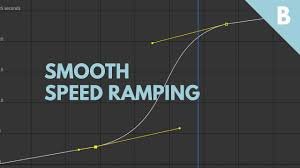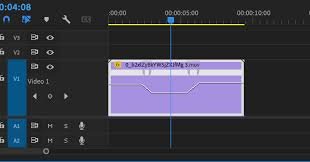
How Speed Ramping Can Make Your Videos Look Cinematic
Have you ever watched a video where the video slows down, and then you feel the moment, and then the video suddenly speeds back up in a burst of energy? That effect is called speed ramping, and it is one of the most powerful video editing effects you can use to make your videos look cinematic and professional.
Whether you’re a content creator, business owner, or filmmaker, learn how to apply speed ramping, which transforms your ordinary footage into visual stories or cinematic types that engage and inspire your audience.
In this guide, we’ll explore:
- What is speed ramping?
- Why does it make your videos look amazing?
- When and how to use it?
- Tools you can try?
- Pro tips to avoid common mistakes?
Let’s start in!
What Is Speed Ramping?
Speed ramping is the process of changing the playback speed of your video clip step by step. Instead of cutting rapidly from slow motion to normal speed, speed ramping lets you transition smoothly between different speeds.
Imagine you are editing a scene where a skateboard launches into the air using a speed ramping effect; you can:
- Play normal speed as they build energy.
- Slow down when the skateboarder jumps.
- Then skateboarders return to normal speed when they land.
This smooth speed change adds cinematic flair, tension, and drama.
Why Does Speed Ramping Make Your Videos Look Cinematic?
Here are a few reasons speed ramping boosts your edits:
✅ Emotional Impact
The slow motion highlights emotion—excitement, suspense. Speed ramping lets you control exactly how long viewers stay in that emotional moment.
✅ Focus and Detail
Speed can change and direct your audience’s attention to see engaging video details, like a product feature or a person’s reaction.
✅ Professionally Refined
Hollywood movies, high-end commercials, and viral YouTube videos are using speed ramping. It makes your content look polished, refined, and intentional.
✅ Dynamic Pacing
When you combine fast and slow motion in your video. Videos feel more alive. They do not just tell a story—they move like one.
Where Can You Use Speed Ramping?
You do not need to edit an action movie to use speed ramping. Here are examples of where it is used:
🎮 Gaming Videos
You can highlight the intense moments of your gameplay—like a perfect sniper shot or a game-winning move.
✈️ Travel Vlogs
You can use it between transition locations or slow down on amazing views.
👟 Sports Highlights
The moment when you kick the ball or swing the bat, then you turn your clip to slow it down; it looks epic or cinematic.
📈 Product Videos
You can draw and highlight important details like features, textures, or logos.
🎤 Music Videos
You can create an energy shift that matches the beat or mood.
Tools and Software for Speed Ramping!
Almost all professional editing software includes speed ramping. Here are a few software programs you can try:
✅ Adobe Premiere Pro
The “Time Remapping” feature lets you add keyframes to adjust speed accurately.
✅ Final Cut Pro
You can use “Blade Speed” and “Speed Ramps” for smooth transitions.
✅ DaVinci Resolve
Use the “Retime Controls” and “Retime Curve” for accurate adjustments.
✅ Filmora
This software is beginner-friendly and includes speed ramping presets.
✅ Mobile Apps
Apps like VN Editor, KineMaster, and LumaFusion also let you create speed ramps on your phone.
If you are not comfortable doing it yourself, there is also a professional editor who provides services (like us at HrideyWorks) and can apply speed ramping with the right finesse.

How to Create a Speed Ramping Effect: Step by Step (Example Premiere Pro)!
Here’s a simple process you can use to create a speed ramping effect:
1️⃣ Import Your Footage
Drag your clip into the timeline.
2️⃣ Enable Time Remapping
Right-click the clip > Show Clip Keyframes > Time Remapping > Speed.
3️⃣ Add Keyframes
Hold Ctrl (Cmd on Mac) and click where you want the speed change to begin and end.
4️⃣ Adjust Speed
Drag the line between keyframes up to speed up or down to slow down.
5️⃣ Smooth the Transition
Pull the handles to create a slow ramp, avoiding sudden jumps.
6️⃣ Preview
Play back the clip and modify it until it feels natural.
Pro Tips for Cinematic Speed Ramping
🎬 Shoot at Higher Frame Rates
To get smooth slow motion, film at 60 fps, 120 fps, or higher.
🎬 Match the Music
Time your ramping to the beat for extra impact.
🎬 Don’t Overuse It
Speed ramping is powerful, but using it in every clip can feel trendy. Reserve it for moments that matter.
🎬 Add Motion Blur
If your editing software allows, enable motion blur to keep transitions looking smooth.
🎬 Keep Context
Always consider how your speed changes to support your story or message.
Why Hire a Professional Video Editor for Speed Ramping?
While you can experiment on your own, achieving truly cinematic results often requires:
- Advanced software knowledge
- Skill in timing and pacing
- Experience in color grading and sound design
At HrideyWorks, I specialize in:
✅ Motion videos
✅ Vlogs
✅ Gaming content
✅ Green screen editing
✅ Speed ramping and dynamic effects
If you want to make your videos stand out, professional editing can save you hours—and deliver results that get noticed.
Final Thoughts
Speed ramping isn’t just a flashy trick—it’s a storytelling tool that can elevate your videos from average to unforgettable.
Whether you’re a brand trying to showcase your products or a creator who wants to captivate your audience, mastering speed ramping is a game changer.
Ready to Transform Your Videos?
If you’d like help bringing your footage to life with speed ramping, motion graphics, and pro-level edits, I’d love to collaborate.
👉 Contact HrideyWorks today to get started.
Let’s create something cinematic together.